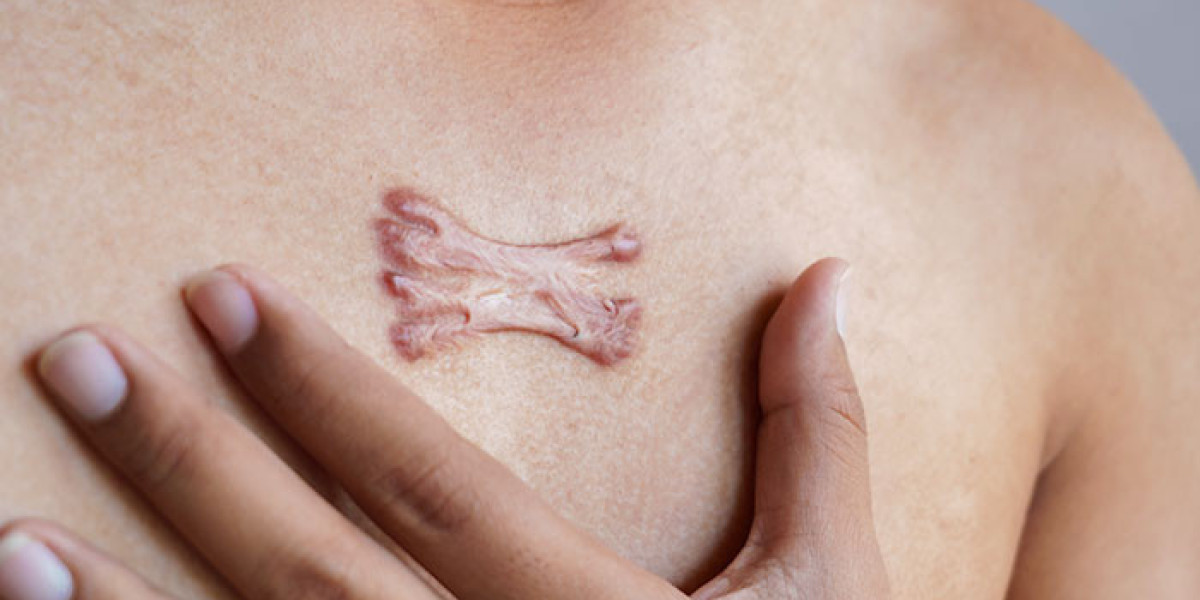Keloids, once considered an untreatable cosmetic affliction, are now the subject of extensive medical research and innovation. For those seeking Keloid treatment in Islamabad, this scientific progress is transforming the landscape of scar management. The latest research is moving beyond single-modality treatments, focusing on a deeper understanding of keloid biology and developing sophisticated combination therapies to improve outcomes and minimize recurrence. This blog will explore the most recent advancements in keloid research and how they are being implemented in clinics across Islamabad.
Understanding Keloid Biology: The Key to New Treatments
Recent research has shed light on the cellular and molecular pathways that cause keloids. Scientists now understand that keloid formation is not just an overproduction of collagen but a complex process involving multiple signaling pathways and an imbalance of growth factors. Key findings include:
Fibroblast Dysregulation: Keloids are characterized by hyperactive fibroblasts, the cells that produce collagen. Research is focusing on finding ways to "turn off" these cells and induce their programmed cell death (apoptosis) without harming surrounding tissue.
Inflammatory and Genetic Factors: Keloid-prone individuals have a heightened inflammatory response to skin injury. Genetic research is also pinpointing specific genes that make a person more susceptible to keloid formation, which could lead to targeted genetic therapies in the future.
Vascularity: Keloids have a dense network of blood vessels that supply the scar with the nutrients needed for continuous growth. This discovery has led to the development of treatments that specifically target these blood vessels.
These insights are driving the development of new, more effective therapies that go beyond simply trying to flatten the scar.
Emerging Treatments and Combination Therapies
The most significant trend in modern keloid treatment is the shift from a single treatment method to a multi-modal approach. Clinics in Islamabad are now offering a combination of therapies to tackle keloids from multiple angles, yielding far better results than any single treatment alone.
1. 5-Fluorouracil (5-FU) and Corticosteroid Combination
This is one of the most significant and well-documented advancements. For years, corticosteroid injections were the gold standard for keloids. However, new research, including studies conducted in Pakistan, has shown that combining corticosteroids with 5-FU (a chemotherapy drug used off-label) is far more effective.
How it works: Corticosteroids reduce inflammation and flatten the keloid, while 5-FU directly inhibits the proliferation of fibroblasts and induces their death. Together, they create a powerful synergy that targets the root cause of the keloid.
Why it's a breakthrough: Studies have shown a significant reduction in keloid volume and a lower recurrence rate compared to steroid monotherapy. It's an excellent option for keloids that have not responded well to traditional injections.
2. Platelet-Rich Plasma (PRP) as an Adjunctive Therapy
PRP has gained popularity in aesthetic medicine for its ability to regenerate tissue. Now, researchers are exploring its use in keloid treatment. A study conducted in Peshawar, Pakistan, showed that combining intralesional PRP with corticosteroids was significantly more effective than corticosteroids alone.
How it works: PRP contains a high concentration of growth factors that help regulate wound healing and remodel scar tissue. When injected with corticosteroids, it helps to enhance the therapeutic effects, leading to better outcomes.
Why it's a breakthrough: While more research is needed, this combination therapy offers a promising new avenue for enhancing the effectiveness of standard treatments, particularly for stubborn keloids.
3. The Rise of Advanced Laser Technology
Lasers have long been used for keloids, but the technology is constantly improving. Islamabad's top clinics are now using advanced lasers to provide more targeted and effective treatments.
Fractional CO2 Laser with Injections: For older, thicker keloids, the combination of a Fractional CO2 laser and corticosteroid injections is a game-changer. The laser creates microscopic channels in the scar, allowing the injected steroids to penetrate deeper and work more effectively.
Pulsed Dye Laser (PDL): Research continues to validate the efficacy of PDL, especially for newer, red keloids. By targeting the blood vessels, it reduces the color and volume of the scar.
4. Radiofrequency (RF) Technology
Some clinics are now incorporating Radiofrequency (RF) treatment to target keloids. RF energy is used to heat the deeper layers of the scar, which can help to remodel collagen and shrink the keloid. This is a non-invasive option that can be used alone or as part of a combination therapy.
The Importance of a Professional and Evidence-Based Approach
The availability of these advanced treatments in Islamabad highlights the importance of seeking a qualified and up-to-date dermatologist. Relying on outdated methods or unproven home remedies can lead to frustrating results and, in some cases, can even worsen the keloid.
When you seek keloid treatment in Islamabad, it's vital to:
Consult a specialist: A board-certified dermatologist or plastic surgeon will be aware of the latest research and will be able to provide a scientifically-backed treatment plan.
Ask about combination therapies: Don't settle for a single treatment. Ask your doctor about a multi-modal approach that is tailored to your specific keloid.
Set realistic expectations: Even with the latest advancements, keloids have a high recurrence rate. A good doctor will manage your expectations and focus on long-term management rather than a "cure."
Conclusion
The field of keloid treatment is rapidly evolving, with a growing body of research supporting more sophisticated and effective combination therapies. In Islamabad, patients are now benefiting from these advancements, including the use of 5-FU, PRP, and advanced laser and radiofrequency technologies. By understanding these new developments and partnering with a knowledgeable specialist, you can embark on a treatment journey that is more likely to yield significant, long-lasting results.








